This article was co-authored by Pete Cerqua and by wikiHow staff writer, Jennifer Mueller, JD. Pete Cerqua is a Certified Personal Trainer and Nutritionist. Pete is also a five-time best-selling author of books including "The 90-Second Fitness Solution" and "High Intensity Fitness Revolution for Women/Men" published by Simon and Schuster and Skyhorse Publishing. Pete has over 20 years of personal training and nutrition coaching experience and operates the 90-Second Fitness flagship studio in New York City.
There are 7 references cited in this article, which can be found at the bottom of the page.
This article has been viewed 45,299 times.
Muscular endurance allows you to perform physically for extended lengths of times without exhaustion. Physical endurance is especially important if you perform physical labor or if you are involved in sports where high levels of exertion are required over hours or even days. Some examples of when physical endurance is useful include during rehabilitation from an injury, digging in the garden all day, working in construction, playing competitive tennis, swimming, or marathon running. Regardless of your reasons for wanting muscle endurance, there are some techniques that you can apply to your gym workout to build muscular endurance.
Steps
Building Strength
-
1Build strength and endurance together. Typically, at the gym you would do fewer repetitions with heavy weights to build strength, and more repetitions with light weights to build endurance. Doing both together in one routine allows you to build muscle strength, size, and endurance all at the same time.[1]
- Design a routine that involves four exercises for each muscle group.
- Each exercise should target that muscle group in a different way, requiring movement from a different angle, or with different grip positions.
- You can use dumbbells, plate loaded bars, and machines or body weight to do strength training exercises.
- For the first exercise, you'll do four repetitions per set with the heaviest weight you can handle. Do three sets with a brief rest of a minute or two in between.
- Your second exercise uses lighter weights, with eight repetitions per set for three sets.
- For your third exercise, choose even lighter weights and do three sets of 12 repetitions each.
- In your fourth and final exercise for that muscle group, do three sets of 16 repetitions with the lightest weight.
- For example, to work the muscles in your back, you might do T-bar rows, wide-grip lat pull-downs, one-arm dumbbell rows, and finally, straight-arm pull-downs.
-
2Correct muscle imbalances. In your strength training, you may focus on one muscle group more than another. If parts of your body are stronger than others, this imbalance causes your body to work inefficiently. That inefficiency not only decreases your muscle endurance, but also makes you more at risk for injury.
- You might recognize significant muscle imbalances from viral "skipped leg day" images showing bodybuilders with skinny, underdeveloped legs and a massive upper body.
- While your imbalance may not be that significant, you probably have an idea of which muscle groups need more work (typically, the ones you don't enjoy, or dread working on).
- You can find more specific muscle imbalances by looking to common muscle group pairs.
- If a particular muscle is consistently tight or always sore after a workout, it may be that its opposing muscle needs to be strengthened.
- For example, if your triceps are tight and sore, strengthening your biceps can improve this (and vice versa). If you have tight hamstrings, work on your quadriceps, abs, and hip flexors.[2]
Advertisement -
3Concentrate on full-range-of-motion exercises. Exercises that employ your full range of motion enable you to work the entire muscle, as well as improving your flexibility. Flexibility is not only essential to helping prevent injury, but can help you build muscle endurance by encouraging your muscles to work more efficiently.[3]
- Greater range of motion accesses greater length of the muscle and hence more muscle fibers.
- Perhaps more importantly, increased flexibility enables you to consistently perform exercises with correct form, which can help prevent strains and injuries.
- Full-range-of-motion exercises improve the function in your joints and reduce stress on your tendons.
- They also will keep the muscle groups surrounding those joints from being overworked.
- You can use your full range of motion on nearly any exercise.
- For example, if you're doing squats, make sure every repetition is a full squat, rather than the shorter "pulse squats" that only employ about a quarter of your full range of motion.
-
4Increase sets and repetitions gradually.[4] If you continue to do the same exercises with the same level of resistance for an extended period of time, eventually you'll get no benefit from the exercises. Progressive overload is the key to continually building muscle endurance.
- It only takes your body a couple of weeks to adjust to resistance, so you should be increasing the amount of weight you use at least that often.
- Along with increasing resistance, increase the number of repetitions you do.
- Increasing repetitions doesn't just apply to weight lifting.
- If you're running, for example, you should increase the distance you run every couple of weeks to increase your cardiovascular and muscular endurance.
Increasing Flexibility
-
1Warm up before stretching.[5] Before doing any kind of stretching exercises, increasing your body temperature by one or two degrees is essential to get blood flowing to the muscles you intend to stretch. Otherwise, you could end up injuring yourself.[6]
- Your warm-up doesn't have to be complex. A simple 10-minute walk or jog typically will do the trick.
- You may also want to incorporate lunges or squats, particularly if your stretching or strength-training exercises for the session are going to be focused on your lower body.
- If you're doing a whole-body workout, try a five-minute walk or jog followed by five minutes of jumping rope or jumping jacks to get your blood pumping.
-
2Stretch both sides of your body. Just as the strength of your muscle groups should be balanced, so should your flexibility. The dominant side of your body may naturally be more flexible than the other, which means you have a deficit to make up.[7]
- To increase your flexibility for the purposes of building muscle endurance, stretch each muscle group every time you exercise.
- If your non-dominant side is weaker or less flexible, start there and then work on your dominant side.
- With all stretching, go as deeply as you can without feeling any pain.
- Stop when you can feel tension, but before the stretch hurts. You should only feel a pull, not intense burning.
- If you've not done a lot of stretching or are particularly stiff, you may want to work with a certified personal trainer in the beginning.
- A trainer can ensure you're using correct form and aren't going too far or putting too much stress on your joints.
-
3Use dynamic stretching before your workout and do static stretching after your workout. Slow, controlled movements that work through your entire range of motion are helpful for increasing flexibility. These stretches also mimic many of the motions you'll use in your full routine, which can enhance your performance.[8]
- In static stretches, you move into a position to stretch a particular muscle group, hold the stretch for several seconds, and then release.
- With dynamic stretches, your body is continually moving. This makes them ideal for a continued warm-up at the beginning of your workout.
- Start with basic movements, such as neck rotations, shoulder circles, and arm swings. Keep your movements slow and controlled.
- Breathe deeply and make every movement with intention and focus.
- Your movements should be smooth and continuous. Go as far as you can, moving through your full range of motion.
- If particular muscles are tight, push them as far as you can without pain.
-
4Use weights to increase certain stretches. Using weight with static stretches may help to lengthen your muscles. However, keep in mind that this type of stretching may be too extreme for some people and it can lead to pulling a muscle. Start with unweight stretches and only move up to this form of stretching if regular static stretching becomes too easy for you.
- A chest stretch with lightweight dumbells: Start by lying on your back on a weight bench with your legs hanging off the end or flat on the floor.
- Lift the dumbbells to a contracted position over your chest, then slowly lower them so your arms are at your sides.
- Lower as far as you can without pain, feeling the stretch in your pectoral muscles.
- Hold the position for about 10 seconds, then slowly raise them back to the contracted position above your chest.
- A biceps and triceps using dumbbells: Lean back on a weight bench at a 60-degree incline (or lie completely flat for a deeper stretch).
- Curl the dumbbells, then lower them slowly into a maximum stretch for your biceps.
- Extend your arms straight up and then lower the dumbbells to either side of your head for a triceps stretch.
- It's possible to add resistance to almost any static stretch, using dumbbells, wrist and ankle weights, or resistance bands.
-
5Incorporate stretching before and after your workout. Stretching encourages the growth of fascia, the connective tissue that holds your muscles in place. Not growing this connective tissue as you are building muscles can inhibit your ability to build both strength and endurance over time.[9]
- Dynamic stretching may be better to do at the beginning of your routine, while static stretching works better as you're entering your cool-down phase.[10]
- You don't have to limit your stretching to a dedicated "workout time.”
- There are plenty of basic stretches that you can do throughout the day, like when you’re sitting at your desk at work.
- Stretching keeps your muscles active and encourages the continued growth of fascia.
- For example, you can do neck rotations after working on the computer for an hour, or stand and do shoulder circles or arm swings.
Designing Your Training Regimen
-
1Limit your recovery time between sets. If you're trying to build muscle endurance, you don't want your muscles to recover – you want them to continue to work for longer. When you exercise, particularly during strength-training exercises, shorten your rest breaks and take fewer of them. Try not to stop until you feel like you absolutely must, or you can no longer complete the repetitions or movements with good form.[11]
- Doing bodyweight exercises until failure will help you build muscle without fancy equipment or a gym.
- For example, do 10 pull-ups, 10 squats, 10 push-ups, and then 10 sit-ups. Do each exercise back-to-back with no rest.
- At the end of that set, if you can no longer continue, take a brief rest, then go through the circuit twice more.
- Keep in mind that this builds primarily cardio endurance, but not skeletal muscle endurance unless the exercises are repeated to failure.
- You also might replace the traditional rest time with a cardio interval.
- For example, do a set of strength-training exercises, then jump rope or jog in place for 30 seconds, then return to another strength-training exercise.
- An added benefit of decreasing your recovery time between sets is that you may find your exercise sessions don't take as much time out of your day.
-
2Combine strength training with cardio.[12] When you divide your training regimen into "strength days" and "cardio days," you'll have a difficult time building muscle endurance. To successfully build endurance, you need to engage all of your energy systems at once.[13]
- Working out in intervals is a good way to do this.
- For example, bench press, then jump rope for a minute, then do squats, then do overhead presses, then do crunches.
- Set your intervals so that upper-body movements are followed by lower-body movements. This gives your muscles a little more recovery time even though your body is constantly moving.
- When you're doing strength-training exercises, try to do your repetitions as quickly as you can while still maintaining good form.
-
3Choose compound and hybrid exercises. Compound exercises require using more than one joint, while hybrid exercises combine two distinct types of movement into one exercise. Doing both of these together increases the whole-body component of your routine, which will help you build muscle endurance.[14]
- Squats, push-ups, and pull-ups are examples of compound exercises.
- Bicep curls, on the other hand, are an example of an isolated exercise – they only focus on your biceps, with limited work done by your other arm muscles (and nothing from your legs).
- Combining two compound exercises, or one compound exercise with an isolated exercise, produces a hybrid exercise.
- For example, you might do a squat with an overhead press. The more muscles you involve in each exercise, the more your heart is stimulated.
- Compound exercises can increase both your muscle and cardiovascular endurance.
- Add an isolated exercise to a compound exercise (ex. lunges with bicep curls) to build muscle endurance while intensely targeting a particular muscle group.
- Combining isolated exercises with compound exercises can help to correct a muscle imbalance.
-
4Add plyometrics. Plyometrics involves explosive movements that stimulate the development of fast-twitch muscle fibers to increase your speed and power. While this might not sound so much like endurance, these movements require a lot of energy and will present a significant challenge to your muscles.[15]
- Full plyometrics routines are designed primarily for professional athletes, and can take quite a toll on the body of beginners or amateur workout enthusiasts.
- However, you can borrow some of the more basic, lower-impact plyometrics movements and incorporate them into your regular workout regimen.
- For example, you might include a set of burpees or jumping knee tucks between regular strength-training exercises.
- Even activities such as jumping rope are technically plyometrics exercises.
-
5Try a variety of activities. In as little as a couple of weeks, your muscles are going to get used to doing even the most well-crafted exercise routine. Switching up activities keeps your muscles from being overused because you're asking them to move in different ways. If you want to build stamina and endurance, it's important to be agile and able to adapt to different movements.[16]
- Join your local gym or fitness center for access to different classes to challenge different muscles and boost your motivation.
- If you can't join a gym, increase the variety in your training regimen by planning several different routines and rotating them.
- Shake up your routine (physically and mentally) by labeling each training routine with a number and drawing a random number or rolling a dice.
- Join community sports league. Playing a sport adds variety to your training regimen, and most sports also build muscle endurance.
What Are The Best Exercises For Building Upper Body Strength?
Expert Q&A
-
QuestionWhat are some easy exercises to build endurance?
 Pete CerquaPete Cerqua is a Certified Personal Trainer and Nutritionist. Pete is also a five-time best-selling author of books including "The 90-Second Fitness Solution" and "High Intensity Fitness Revolution for Women/Men" published by Simon and Schuster and Skyhorse Publishing. Pete has over 20 years of personal training and nutrition coaching experience and operates the 90-Second Fitness flagship studio in New York City.
Pete CerquaPete Cerqua is a Certified Personal Trainer and Nutritionist. Pete is also a five-time best-selling author of books including "The 90-Second Fitness Solution" and "High Intensity Fitness Revolution for Women/Men" published by Simon and Schuster and Skyhorse Publishing. Pete has over 20 years of personal training and nutrition coaching experience and operates the 90-Second Fitness flagship studio in New York City.
Certified Personal Trainer & Nutritionist You can try doing Supermans to strengthen your back. Lie on your stomach with arms and legs fully extended. Lift your arms and legs off the floor and hold the position as long as you can to really feel the burn in your lower back.
You can try doing Supermans to strengthen your back. Lie on your stomach with arms and legs fully extended. Lift your arms and legs off the floor and hold the position as long as you can to really feel the burn in your lower back. -
QuestionHow do I work my back and biceps without a pull-up bar or any equipment?
 Community AnswerPlanks and push-ups will help. Start out with 30 second planks if you're a beginner, and try to work your way up to holding them for 1-2 minutes.
Community AnswerPlanks and push-ups will help. Start out with 30 second planks if you're a beginner, and try to work your way up to holding them for 1-2 minutes. -
QuestionHow do I know if I am pushing myself hard enough (endurance and strength)?
 Community AnswerYou should feel tired and out of breath, but not so exhausted that you feel ill.
Community AnswerYou should feel tired and out of breath, but not so exhausted that you feel ill.
References
- ↑ http://www.bodybuilding.com/fun/build-muscle-strength-size-and-endurance-in-one-workout.html
- ↑ http://www.bodybuilding.com/fun/wotw80.htm
- ↑ http://www.mensfitness.com/training/pro-tips/7-ways-improve-flexibility
- ↑ Pete Cerqua. Certified Personal Trainer & Nutritionist. Expert Interview. 14 May 2020.
- ↑ Pete Cerqua. Certified Personal Trainer & Nutritionist. Expert Interview. 14 May 2020.
- ↑ http://www.fitday.com/fitness-articles/fitness/exercises/how-to-improve-flexibility-and-muscular-endurance.html
- ↑ http://www.fitday.com/fitness-articles/fitness/exercises/how-to-improve-flexibility-and-muscular-endurance.html
- ↑ https://www.brianmac.co.uk/dynamic.htm
- ↑ http://www.bodybuilding.com/fun/wotw80.htm
- ↑ https://www.brianmac.co.uk/dynamic.htm
- ↑ http://www.mensfitness.com/training/endurance/7-ways-to-boost-your-endurance-and-stamina
- ↑ Pete Cerqua. Certified Personal Trainer & Nutritionist. Expert Interview. 14 May 2020.
- ↑ http://www.mensfitness.com/training/endurance/7-ways-to-boost-your-endurance-and-stamina
- ↑ http://www.mensfitness.com/training/endurance/7-ways-to-boost-your-endurance-and-stamina
- ↑ http://www.mensfitness.com/training/endurance/7-ways-to-boost-your-endurance-and-stamina
- ↑ http://www.mensfitness.com/training/endurance/7-ways-to-boost-your-endurance-and-stamina
About This Article
Building up your muscle endurance will help you work out for longer without getting as tired. To start building your endurance, focus on doing more reps and using lighter weights when you work out. You should also take fewer and shorter breaks. It might be hard, but working yourself to your limit and not giving your muscles a chance to recover is what will really help you develop more muscle endurance. When it comes to choosing the best exercises for building your muscle endurance, go with compound exercises, which are exercises that work out multiple muscle groups at once. Squats, push-ups, and pull-ups are all compound exercises. Combine strength training and cardio exercises during each workout too. Engaging all of your systems within the same workout will help you build more muscle endurance. For more tips from our Personal Training co-author, including how to increase your flexibility, read on!
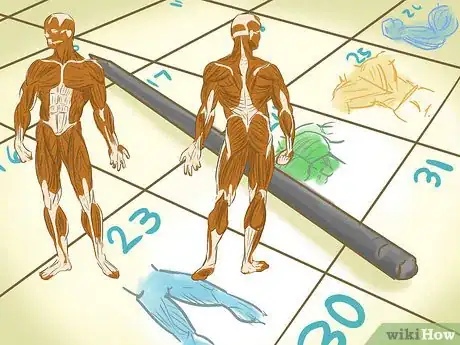
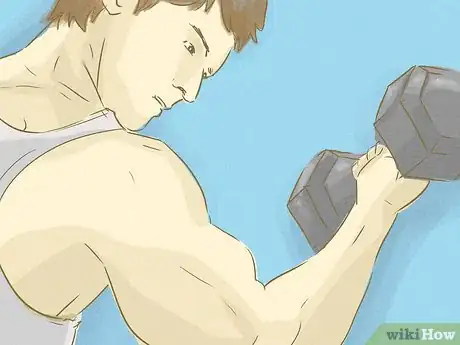

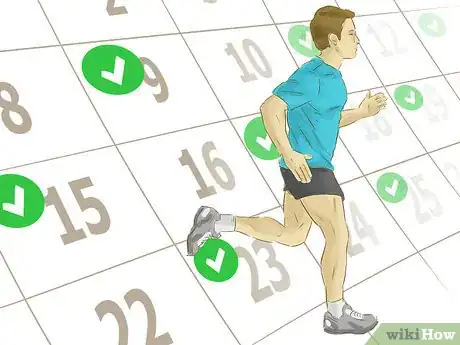


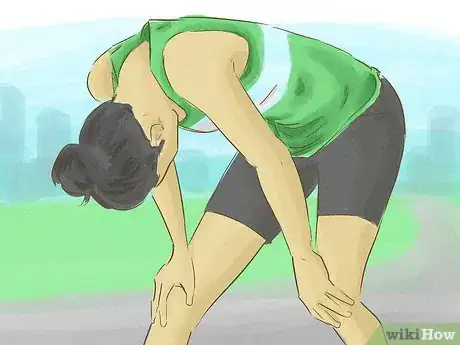

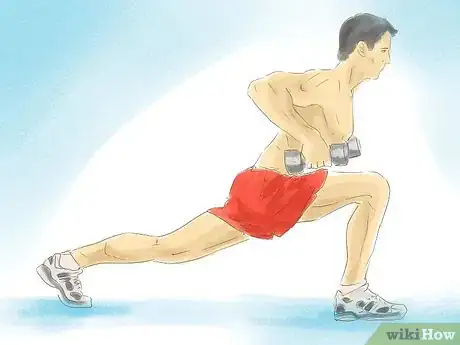


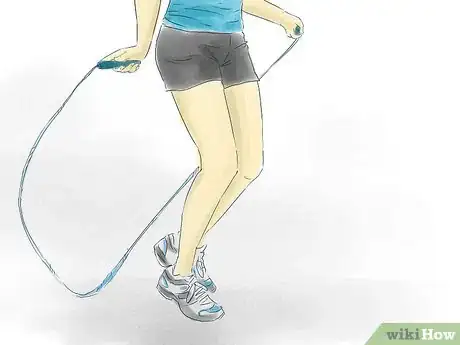
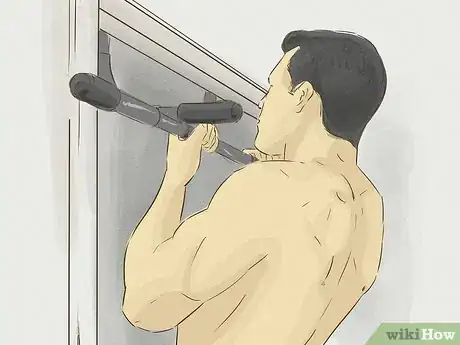

-Step-12.webp)
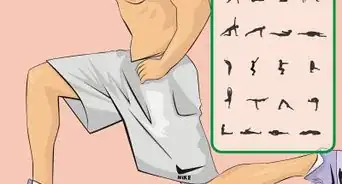

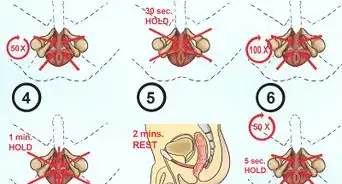


-Step-24.webp)














































